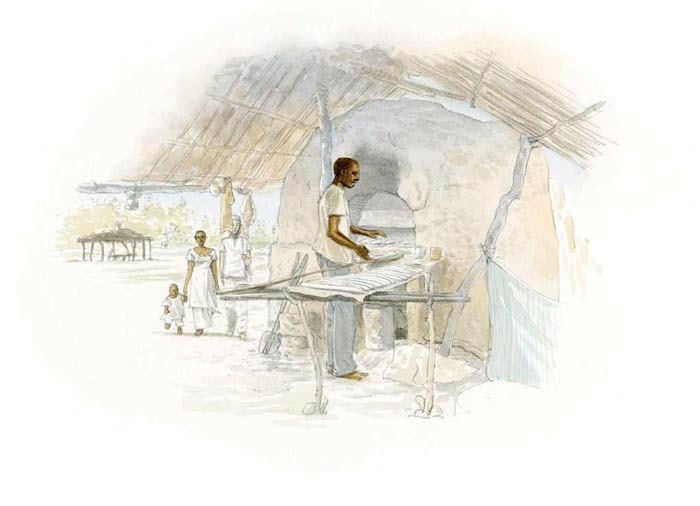Tapalapa

Form: Shaped like a short baguette
Country of origin: Senegal
What distinguishes it from other methods of bread making: Made of a mixture of millet and wheat, sometimes corn, to which can be added black-eyed pea (cowpea) flour
Category of bread: (3) Sprinkled with yeast and cooked in the oven, tapalapa falls into the category of crusty breads
Particularity: The Senegalese only recently rediscovered this bush bread
Ingredients: Wheat flour; millet flour; cornmeal; cowpea flour; baker’s yeast; salt; water

Senegal
In order to deflate its grain spending, namely that of importing of wheat, over the last few years, the Senegalese government tried to revive the consumption of locally grown millet. In particular, it sought to promote pamiblé, which is made from a mixture of millet and wheat. It seemed like a good idea, but the Senegalese didn’t pick up on it. It’s odd to think a government could change people’s eating habits by making a decree.
What the Senegalese did rediscover, to their delight, was tapalapa or bush bread, which they had long been forgotten. Wheat and millet flour, cornmeal (and sometimes black-eyed pea flour, often eaten in West Africa) and yeast are mixed to obtain dough, which is left to rise twice (once before shaping, and once after shaping). The bread rolls are stretched out lengthwise so they have enough air, like for a baguette, referred to as toubag, the name the Africans gave to the whites. Tapalapas are cooked in a wood oven.
This bread therefore saw a renaissance in the urban landscape, and reminded people that it had existed long before the arrival of French colonists, who forced their eating habits on the population. Tapalapas are made in homes, then carted to Dakar in the wee hours of the morning and sold straight from the box on street corners of the city.

